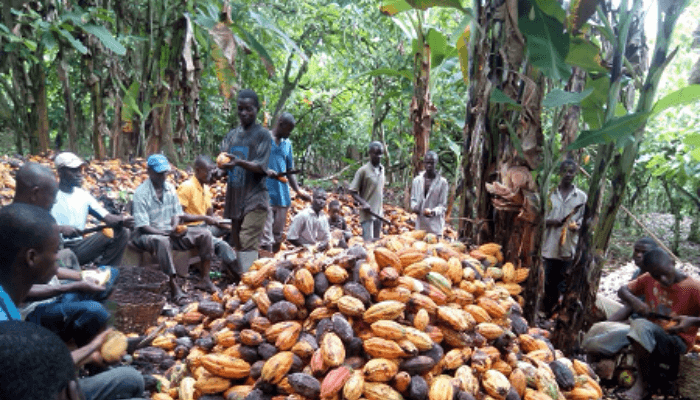Cocoa was introduced to Nigeria in 1874. It took a few decades for the nation to become one of the largest producers of the commodity across the globe. Today, in 1960, Nigeria became the second producer after Ghana and produced about 200,000 metric tones annually.
The then western region government of Nigeria used to finance most of its developmental projects from cocoa proceeds. With the coming of crude oil, however, most of the plantations were abandoned, and production began to dwindle.
There is the need to revitalize- cocoa production in Nigeria because of dwindling oil income. There is also the need to diversify the economy in order to create jobs as well as income opportunity for Nigerians in the face the global financial meltdown and the inability of the income from petroleum to create jobs as well as bring wealth to majority of Nigerians.
One of the most exportable crops in Nigeria is cocoa, which readily generates export earnings for Nigerians. Also, it is an investment that outlives the owner. A direct implication of this is that an investor in a cocoa plantation will reap his returns for the rest of his lifetime.
The uses to which cocoa can be put into are numerous. These range from amongst others, cocoa butter, cake, and liquor. The products are used in producing beverages for human consumption and cosmetics. Their by-products are also useful as organic fertilizers and feed for ruminant animals. So far, from the cocoa pod, only the cocoa beans are economically utilized.
The cocoa husk and the cocoa sweetens have been proved to be able of a number of industrial processes like use of husk in livestock feeds and soap making, and that of sweeteners in manufacturing of jellies, Jams, Foodstuffs ingredients, wines, sugary solution amongst others.
Requirements
Large expanse of land where the soil is deep, fertile, aerated and loamy in nature.
Other sources of procurement of seedlings are very important. Alternatively, nursery may be prepared separately whenever the seed are pre-planted before transplanting them to the field. Some commercial plantings are grown either from seeds or vegetative breeding. However, commercial plantings are mainly grown from seeds.
Other requirements are black polythene bags, farm implements, shading materials, wind breakers, abundant labour, chemicals, processing implements, qualified personnel, some growth hormones and drying facilities.
- Pre-Investment N100,000
- Acquisition of land 10 ha @ N500,000/ha: N5,000,000
- Land preparation 10 ha @ N100,000/ha: N1,000,000
- Procurement of seedlings 50,000 @ N100: N5,000,000
- Planting and other expenses @ N200,000/ha : N2,000,000
This project can yield an annual income of N28 million, while the operating expenses are put at N10 million per annum. The investors will be making more than N18 million annually from the fourth year for their lifetime.

